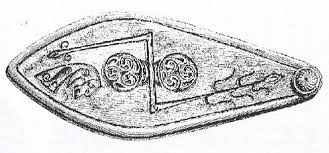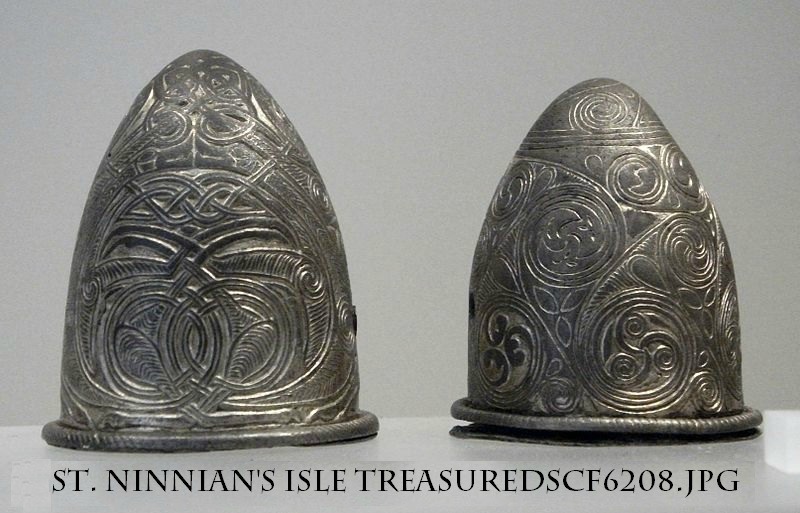One of the things that I do when I attend events is watch to see what new culture people are showing an interest in. There are definitely “fads” for various cultures, and I like to understand what they are so that I can better answer people’s questions and sometimes add new items to my shop. The majority of the new questions that I received at Gulf Wars this year were about Picts. And I saw a fair amount of confusion about Picts and Celts.
First, let me say that the Celts of Ireland and the Picts of Scotland were both Celtic peoples. Most authorities seem to agree that Pictish was a Celtic language, probably related to the Brittonic language that was spoken south of them. The ancient writers, including the Romans and people like Bede, mention the Picts, who lived in the north and eastern portions of Scotland. The ancient Irish writers seemed to feel a common bond with the Picts, who were Christianized in fits and starts, beginning in about the fifth century (the same time as St Patrick was working in Ireland) and culminating in about the 8th century, at least among the Southern Picts, by St. Ninnian.
The folks that I talked to at Gulf Wars were mostly interested in the characteristically Pictish symbols that were carved in stone slabs, and occasionally appear in jewelry and great works of scribal art, such as the Book of Kells. The big problem with this, is that we have absolutely no clue what these symbols mean. Nonetheless they are intriguing, and very mysterious, and have a lot of the same draw that Runes have. Some, like the z-rod, were probably considered powerful, since they seem to appear on important pieces of jewelry, like the terminal rings used to close the massive silver neck chains that appear to have been associated with important chiefs. This leaf shaped plaque from Norrie’s Law Hoard shows a typical z-rod symbol combined with a double disk.
Above all, Pictish art is so much more than just Celtic knotwork. It sometimes uses Celtic knotwork as a “filler”. The tapering designs, exotic beasts and trefoils are only a small portion of the magic of Pictish art.
Unfortunately most of the early finds were destroyed, or despoiled to the point where only a small portion of the artifacts survive. An exception to that is the St. Ninnian’s Isle Treasure, which was discovered during a purposeful excavation, July 4, 1958. The entire hoard, with the exception of part of a porpoise jaw bone, is made of silver, or silver gilt, and all 28 pieces have been preserved in the National Museum of Scotland. The website has a short video about the treasure as well as an excellent set of pictures.
There are also other Pictish treasures on the site, with some great pictures of the pieces. Especially when I am trying to understand a group that I have never really studied before, I always try to look at as much of their artwork and jewelry as I can. I have hopes that with increasingly large quantities of construction development in Scotland, modern archaeology will be able to shed more light on this fascinating, and very artistically complex culture.


